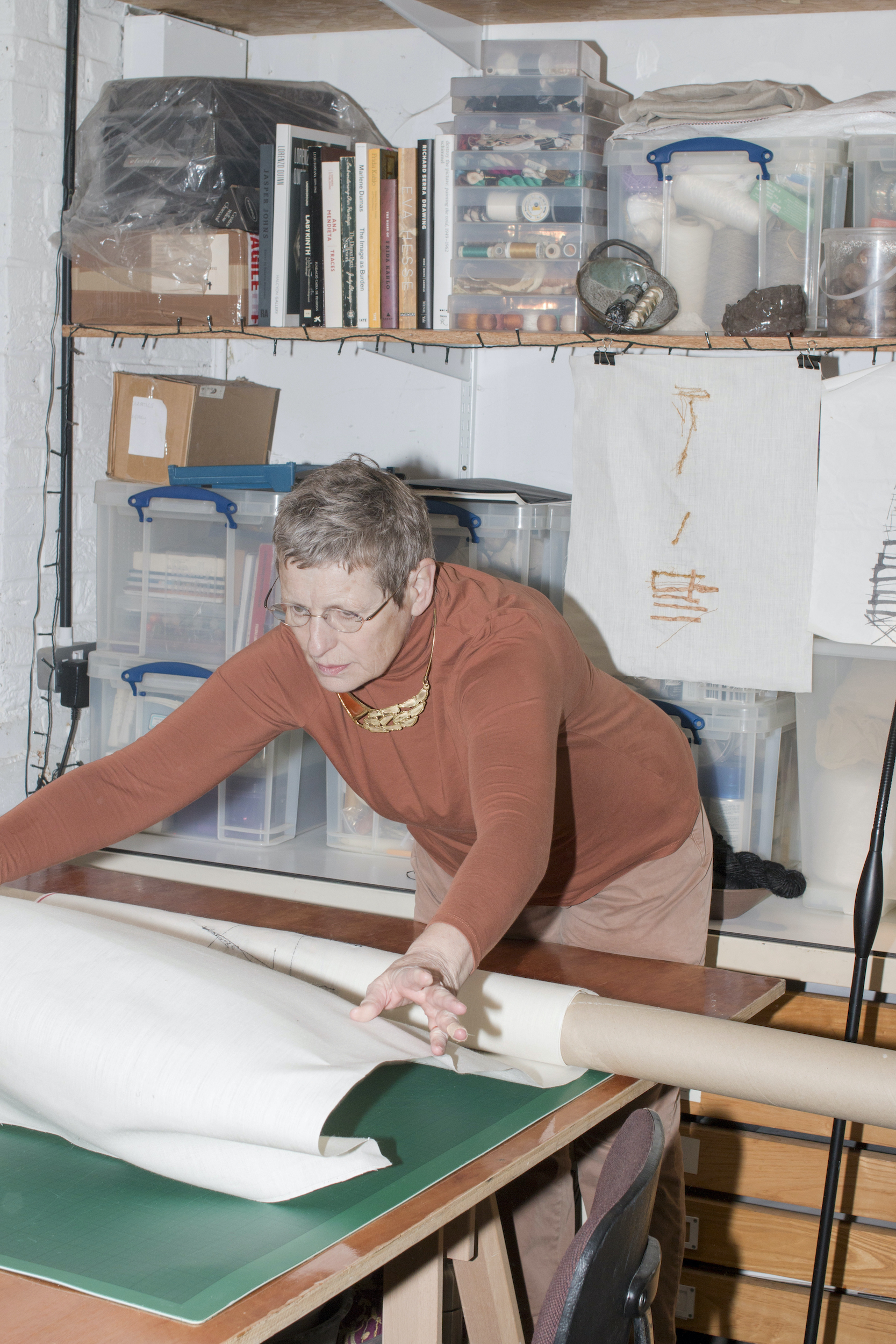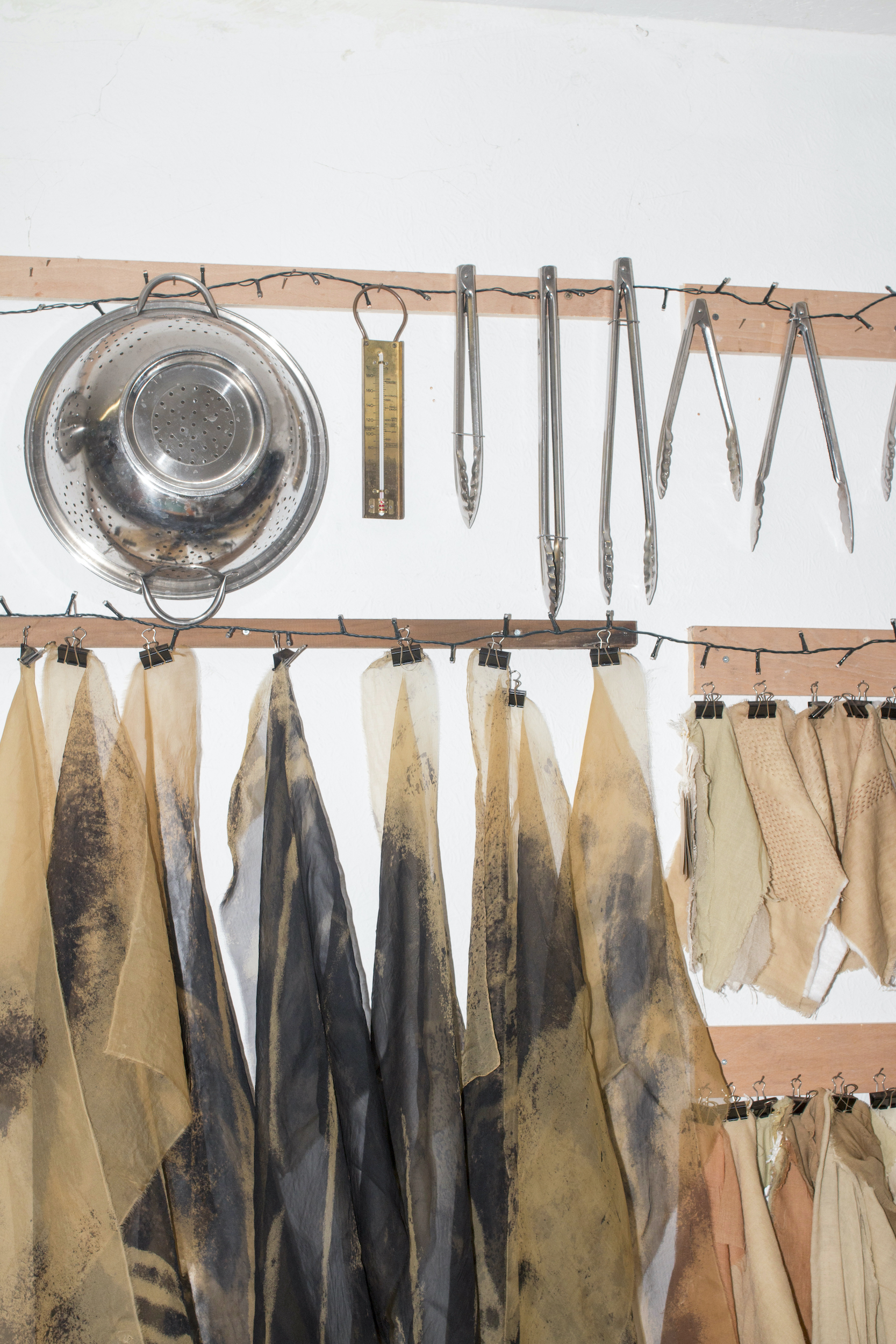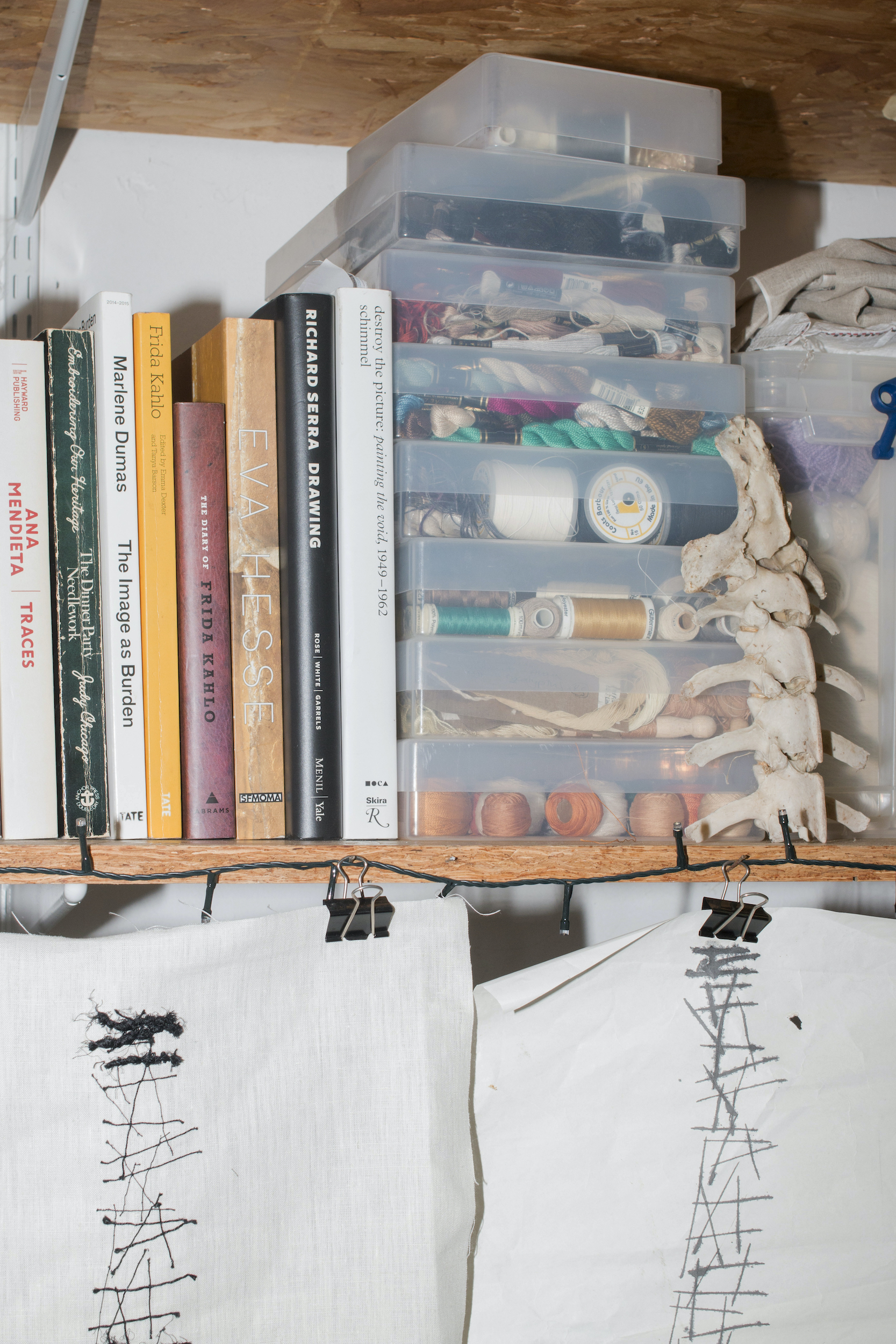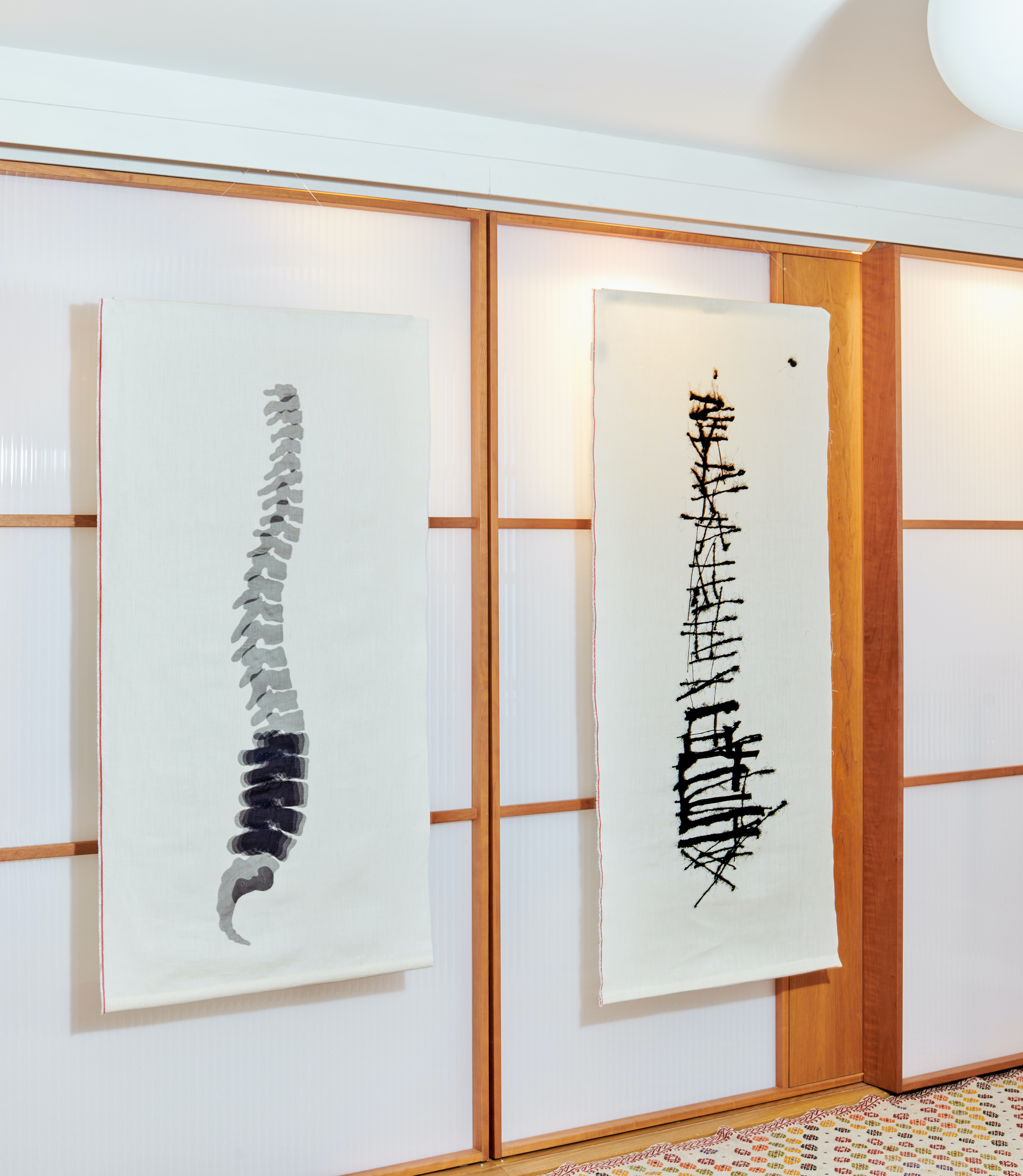Penelope Clayden
Can you describe your work in three words?
Aesthetic, abstraction, mortality.
You started your career as a nurse. What got you into the arts?
I’ve been a maker all my life. My mother and the women in my family taught me to stitch and sew at an early age. I always enjoyed working with cloth and thread, so eventually I decided to study for an MA in Textiles to develop my ideas further.
How did you become an artist?
When I was working as a nurse, I found that I had to be creative in the way I approached my daily tasks and the way I interacted with people. My nursing experience has certainly informed my artistic practice. Over the last twenty years my focus has shifted, and I have found myself working predominantly with artists. Since 2016 my studio has been based at Rochester Square in Camden, and I am now part of a thriving community of artists working across various media.
What interests you in using cloth as a medium?
I’m interested in the tactility of cloth and the role it plays at significant moments in our lives. As a midwife I would wrap newborn babies in cloth, and when nursing in palliative care we would wrap the deceased in cloth. It is a kind of omnipresent material that we share an intimate relationship with. Our clothes are made from cloth and stitch and these materials become like a second skin. I only work with natural fabrics such as linen, cotton, silk and wool as these were the materials of the original wound dressings and for me, there is something important about the way these materials help us to heal. I respond to my own pain when I work, making marks on and through the cloth, stitching with a needle and thread.
Are there any ongoing themes within your work?
The spine is a motif that reoccurs in my work. 80% of nurses experience chronic back pain, me included. The title for a lot of my work is Redacted Revealed, this refers to the different forms and layers of pain. I use layers of cloth to represent these layers, both hidden and revealed, usually using black thread. I have recently started to introduce colour on occasions when I am pain-free!
The spine is certainly a reoccurring theme in your work. When did you start using it?
I’ve always been fascinated with the spine as it is a universal motif recognisable to everyone — most creatures of the natural world have a spine. It both holds us upright and allows us to bend and twist with ease. It provides structural and central nervous system support for our whole body. I enjoy the way that it’s an image that can be abstracted but remain recognisable.
How do you choose your materials? Do they conceal special significations to you?
I find it easiest to express myself through cloth and stitch and I appreciate the cyclical, organic nature of these materials. Flax (which is made into linen) and cotton are plants, while wool and silk are animal fibres. All of these fibres eventually disintegrate and return to the earth, just as our mortal bodies are also fragile and will return to the earth after we die.
Who are the artists that have inspired you most?
I’m inspired by Chiharu Shiota, a Japanese performance and installation artist who fills rooms with vast webs of thread, and also Frida Kahlo, whose spine, pelvis and internal organs were famously damaged in a bus accident. They both visually represent their own pain and anxiety, which resonates in my own practice. Ann Christopher’s and Richard Serra’s drawings are so aesthetically intriguing to me.
What interested you about joining Canopy Collections?
I’m so thrilled to have been invited to join Canopy Collections. It offers me a unique opportunity to have my work shown alongside other respected artists within the living, home environment. Their Autumn 2020 collection is so varied but complementary.
Do you collect art from other artists? How important is it for you to live with art?
I find living alongside hand-crafted objects and artworks to be beneficial to my wellbeing and I like to collect art objects as well as pieces of furniture. My collection includes Georgian ladies’ chairs and an Edwardian chaise longue that are family heirlooms. These sit alongside twentieth-century stoneware, contemporary ceramic pieces and photography. Living with objects that have been made by hand, particularly by artists I know personally, stimulates me in my own making.






